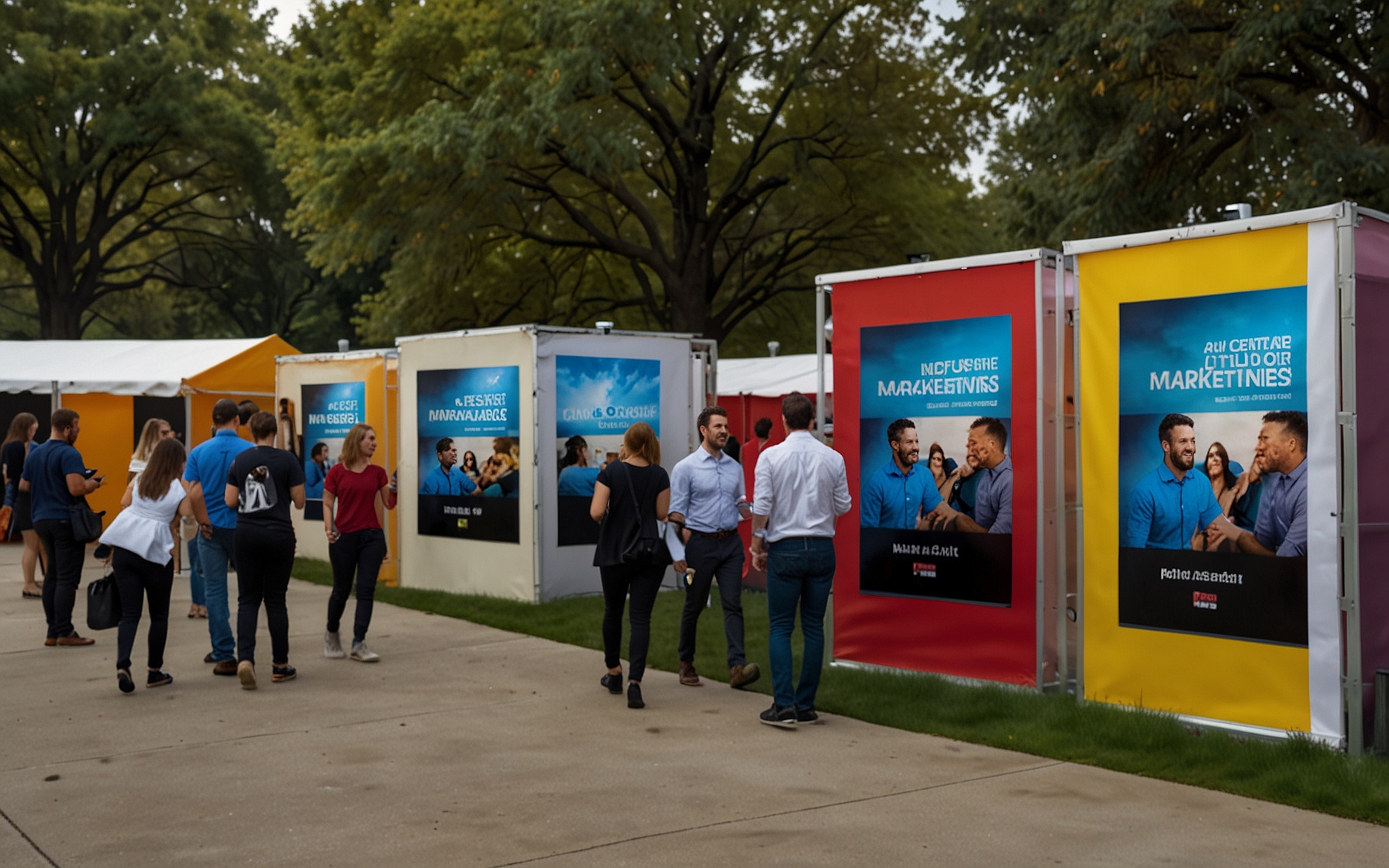
Making Brands Unforgettable Through Experiential Campaigns
This blog explores how experiential campaigns have become essential for brands aiming to create meaningful, lasting connections beyond traditional advertising. Highlighting trends like inclusivity, sustainability, gamification, and hybrid events, it reveals how immersive, interactive experiences activate brand loyalty and engagement in today's crowded market.
In 2025, brands who want to be remembered are moving far beyond basic ads or surface-level messaging. Experiential campaigns have become the heart of modern event marketing, and for startups, SMEs and every marketing team with big ambitions, they deliver a shot at genuine connection in a marketplace that is honestly just too loud and crowded. Event experiences are how brands earn lasting loyalty, spark word-of-mouth, and actually feel real to their audience—not just seen.
The Shift to Deep Connection
Everywhere you look, brands are realizing transactions alone can't cut it. There's a clear shift toward meaningful, human moments at every size of event. Now, technology isn't simply flashy—things like AI photo booths and reactive installations create interactions that feel custom and alive, pulling people into each campaign. At the center of this trend is the emotional hook: the feeling of being involved and understood sticks with you long after a typical ad is forgotten.
Gamification is another big trend. Rather than just selling, brands offer adventure—real games, interactive contests, themed challenges that work across industries from wellness to cars. The joy that comes from participating doesn’t just draw crowds, it makes the whole campaign memorable.
Inclusivity, Sustainability, and Hybrid Experiences
The most talked-about campaigns in 2025 all share some things in common—above all, they make sure everybody belongs. Events are getting a serious rethink when it comes to accessibility and inclusion, with thoughtful design that means more people are able to take part, in person and virtually. The digital part of an event isn’t just a livestream add-on. Things like VR, AR and hybrid models bring remote audiences into the brand’s world, turning local launches into global moments.
There’s also serious focus on being transparent and sustainable. Nowadays, campaigns need to show audiences they’re walking the walk, from green event materials to clearer supply chains. It isn’t just lip service—doing this right leads to real trust, and that’s hard to win in marketing today.
Brand Activation: More Than Just Buzz
Events used to be passive, but brand activation now is all about action and unforgettable moments. Think pop-up installations—mobile film closets, rolling product demos, and pop-up stores that invite people to touch and try. It isn’t just samples either; real-world demos and one-on-one talks are now critical since most people say they recall in-person experiences way more strongly than online ones.
The digital angle keeps growing, too. Brands are running live contests on social media, collaborating with micro-influencers, and playing with AR-powered campaigns that are genuinely worth sharing. This all means more word-of-mouth, both online and off, and encourages users to put their own spin on the brand message.
Some standout activations haven’t just made a blip—they changed the rules. The Criterion Collection turned a classic van into a traveling, hands-on movie archive. Adidas got people sweating with interactive fitness challenges right on the product floor. Even giant music events aren't just about music anymore—they’re creative playgrounds for brands to get noticed and give people experiences they’ll remember.
How to Make Your Brand Unmissable
What makes these successful campaigns work? Start real simple: use technology in ways that support deeper, more human engagement. Keep things accessible and open the doors wide—if someone feels shut out, they won’t talk about the event for the right reasons. Authenticity, especially around things like sustainability, will always speak the loudest.
The real magic often happens at smaller, more focused events. When a pop-up or an exclusive gathering is clearly built for that community, it builds closer ties—plus, it is way easier to measure what happens and to react quickly. Every campaign, no matter the scale, should have clear goals in mind (real engagement, new leads, or more online chatter) and be ready to listen, learn and tweak with each run.
Steps for Activating Your Brand
So how do you actually start? Begin by mapping the places where customers connect with your brand—where a physical moment, a cool digital adventure, or both, can make your message come alive. Inject interactivity in smart ways: maybe it’s a pop-up with hands-on activities, a VR demo, or a gamified booth.
You want to team up with people or groups that help amplify your message to the right crowd—micro-influencers, community partners, niche events. These partnerships keep campaigns authentic and build buzz that doesn’t just fade away. Don’t just count clicks or ticket sales: pay attention to what people felt. Did they walk away excited and eager to share? That’s what really matters.
If you keep listening and adjusting, your experiential campaigns will get better every time. In an era where everyone fights for a few seconds of attention, helping someone live your brand—even for a moment—will carry a lot further than any scripted pitch.
#brand #experiential #events #activation #live





